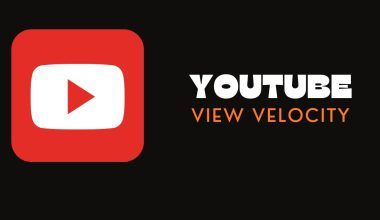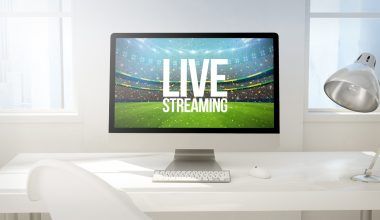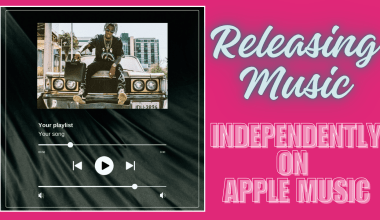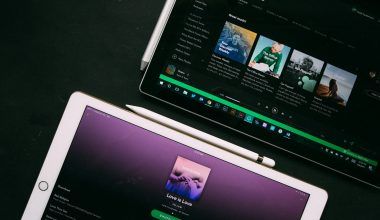As an artist or a music enthusiast, you may wonder, do artists get paid for Spotify streams? This question is crucial in understanding the modern music industry and the digital era’s dynamics. Streaming platforms like Spotify have revolutionized how we consume music, but how do they impact the revenue streams for artists? This blog aims to answer this question comprehensively, exploring how artists earn from Spotify, the factors influencing their earnings, and the broader implications for the music industry.
The Basics of Spotify Payments
To start with, do artists get paid for Spotify streams? Yes, they do. Artists earn money from Spotify streams through a system that allocates a portion of the platform’s revenue to rights holders. However, the amount an artist earns per stream is complex and influenced by various factors.
How Spotify Revenue Works
Spotify operates on a subscription model, generating revenue from both free users who listen to ads and premium subscribers. This revenue is pooled together, and Spotify allocates a percentage of it to rights holders, which include record labels, distributors, and ultimately, artists.
Revenue Distribution
When discussing do artists get paid for Spotify streams, it’s essential to understand how revenue is distributed. Spotify does not pay artists directly. Instead, payments go to rights holders, who then distribute the money to the artists. This can include record labels, music publishers, and distributors, who take their cut before paying the artists.
Factors Affecting Artist Earnings
There are several factors that influence how much an artist earns from Spotify streams. These include the artist’s share of royalties, the country of the listener, and the total number of streams.
Royalty Rates
Royalty rates can vary significantly. Major artists signed to large record labels may have different royalty agreements compared to independent artists. Typically, major labels negotiate higher rates due to their bargaining power.
Geographical Influence
The amount paid per stream can also vary depending on the country where the stream originates. For instance, streams from countries with higher subscription rates may generate more revenue compared to those from countries with lower subscription rates.
Stream Volume
Finally, the volume of streams plays a crucial role. An artist with millions of streams will naturally earn more than an artist with a few thousand streams. However, reaching a high number of streams requires significant marketing and promotion efforts.
How Much Do Artists Earn Per Stream?
To quantify do artists get paid for Spotify streams effectively, it’s important to look at the average earnings per stream. On average, Spotify pays between $0.003 to $0.005 per stream. This means an artist would need about 250 streams to earn a dollar.
Independent vs. Signed Artists
Independent artists may earn more per stream compared to signed artists because they do not have to share their revenue with record labels. However, signed artists might benefit from the promotional power of a record label, potentially leading to more streams.
Case Study: Comparing Earnings
Let’s consider a case study to understand this better. Suppose an independent artist and a signed artist each get 1 million streams. The independent artist might receive the full $4,000 (assuming $0.004 per stream), while the signed artist, after sharing with their label, might only get $1,200. This difference highlights the importance of understanding your agreements and choosing the right path for your career.
Strategies to Increase Earnings from Spotify
Given the varying factors affecting earnings, artists can adopt several strategies to maximize their revenue from Spotify.
Building a Strong Fanbase
A loyal fanbase is crucial. Engaging with fans through social media, live performances, and exclusive content can drive more streams. Platforms like Instagram, Twitter, and Facebook are invaluable tools for artists to maintain a direct line of communication with their fans.
Optimizing Music for Playlists
Getting featured on popular playlists can significantly boost streams. Artists should focus on creating high-quality music that fits the mood and genre of popular playlists on Spotify. Being added to a playlist like “Today’s Top Hits” or “RapCaviar” can bring in millions of streams.
Effective Promotion
Promotion is key to increasing visibility. This can include social media campaigns, collaborations with other artists, and leveraging music marketing tools. Services like Spotify’s “Marquee” help promote new releases to targeted listeners, boosting streams.
Direct Engagement
Directly engaging with fans through platforms like Spotify for Artists can provide valuable insights into listener demographics and preferences, helping tailor promotional strategies more effectively. Understanding where your listeners are from and what other music they enjoy can help refine your marketing efforts.
The Broader Impact on the Music Industry
The question of do artists get paid for Spotify streams also ties into the broader impact of streaming on the music industry. Streaming has democratized music distribution, allowing independent artists to reach global audiences without the need for major label backing. However, it has also led to debates about fair compensation for artists.
Advantages of Streaming
Streaming offers several benefits, including instant access to a global audience, detailed listener analytics, and the ability to release music without traditional gatekeepers. Platforms like Spotify provide artists with unprecedented access to listeners around the world, breaking down geographical barriers.
Challenges and Criticisms
However, the low per-stream payout has been criticized. Many artists argue that streaming platforms do not pay enough to sustain a living, especially for those without large followings. This has led to calls for higher royalty rates and more equitable distribution of revenue. Artists like Taylor Swift and Thom Yorke have spoken out against the current streaming model, advocating for better compensation.
The Future of Artist Compensation
The future of artist compensation on streaming platforms is a hot topic. As more artists and industry professionals call for change, we might see new models emerging. These could include higher subscription fees, tiered artist payment systems, or even entirely new platforms designed to prioritize fair artist compensation.
Understanding Spotify’s Payment Process
To fully grasp do artists get paid for Spotify streams, we need to delve deeper into Spotify’s payment process. Spotify collects revenue from its users through subscription fees and advertisements. This revenue is then pooled together and distributed among rights holders based on the share of streams they accumulate.
The Role of Record Labels and Distributors
Record labels and distributors play a crucial role in this process. They negotiate terms with Spotify and other streaming platforms and collect payments on behalf of the artists. Independent artists often use distributors like DistroKid, TuneCore, or CD Baby to get their music on Spotify and other streaming services.
The Importance of Metadata
Accurate metadata is essential for ensuring artists get paid correctly. This includes information like song title, artist name, and credits. Incorrect or incomplete metadata can lead to delays or errors in payment.
How Artists Can Optimize Their Spotify Presence
Given the competitive nature of streaming, artists must optimize their Spotify presence to maximize earnings.
Creating Engaging Profiles
An engaging profile can attract more followers and streams. This includes a compelling bio, artist profile picture, professional photos, and links to social media. Regularly updating your profile with new content and playlists can keep fans engaged.
Releasing Music Strategically
Timing your releases strategically can make a big difference. Consider releasing new music when it’s less likely to get lost among high-profile releases, or during times when listeners are more active, such as weekends or holidays.
Utilizing Spotify for Artists
Spotify for Artists provides tools to manage your profile, track your performance, and understand your audience. Use this platform to submit your songs for playlist consideration, analyze listener data, and promote your music effectively.
Collaborating with Other Artists
Collaborations can introduce your music to new audiences. Partner with artists in similar or complementary genres to expand your reach. Featuring on each other’s tracks can be mutually beneficial.
Case Studies of Successful Spotify Artists
Understanding do artists get paid for Spotify streams is also about looking at success stories. Several artists have leveraged Spotify to achieve significant financial success.
Example 1: Billie Eilish
Billie Eilish, an independent artist turned global superstar, gained massive attention through Spotify. Her songs were featured on major playlists, and she actively engaged with her audience through social media and Spotify for Artists.
Example 2: Chance the Rapper
Chance the Rapper is another example of an artist who thrived without a major label. By releasing his music for free on platforms like Spotify, he built a loyal fanbase and monetized through tours and merchandise.
The Role of Streaming in Artist Discovery
Streaming platforms like Spotify have transformed how new artists are discovered. Playlists curated by Spotify’s editorial team, algorithmic playlists like Discover Weekly, and user-generated playlists play a significant role in introducing new music to listeners.
Algorithmic Playlists
Spotify’s algorithmic playlists, such as Discover Weekly and Release Radar, use data to recommend music to users based on their listening habits. Getting featured on these playlists can lead to a substantial increase in streams.
User-Generated Playlists
User-generated playlists also hold significant influence. Many users create playlists for specific moods or activities, and getting your music added to these playlists can drive streams from listeners who might not have discovered your music otherwise.
Maximizing Revenue Beyond Spotify Streams
While understanding do artists get paid for Spotify streams is crucial, artists should also explore additional revenue streams to sustain their careers.
Merchandise Sales
Selling merchandise is a direct way to earn money and connect with fans. This can include T-shirts, posters, vinyl records, and other branded items.
Live Performances
Live performances remain a vital revenue source for artists. Streaming platforms can help build an audience that attends concerts, festivals, and tours.
Sync Licensing
Sync licensing involves placing your music in TV shows, movies, commercials, and video games. This can be a lucrative income stream, offering both upfront payments and royalties.
Crowdfunding
Platforms like Patreon and Kickstarter allow fans to support artists directly. By offering exclusive content, early access to new releases, or behind-the-scenes insights, artists can create a steady income stream from their most dedicated fans.
The Ethical Debate: Are Artists Fairly Compensated?
While the basic question of do artists get paid for Spotify streams has a straightforward answer, the ethical implications are more complex. Many argue that the current model disproportionately benefits major labels and streaming platforms at the expense of the artists themselves.
The Revenue Split
The typical revenue split on Spotify sees the platform keeping around 30% of its revenue, with the remaining 70% going to rights holders. However, after labels and distributors take their cut, the artist often ends up with a much smaller percentage.
Calls for Change
There have been increasing calls for change within the industry. Some suggest a user-centric payment system, where a listener’s subscription fee is divided only among the artists they actually listen to, rather than being pooled together. This model could potentially offer fairer compensation to artists with smaller but loyal followings.
Streaming Platforms Compared
While this blog focuses on do artists get paid for Spotify streams, it’s also useful to compare Spotify with other streaming platforms like Apple Music, Amazon Music, and Tidal.
Apple Music
Apple Music generally pays higher per-stream rates compared to Spotify, often cited at around $0.01 per stream. However, like Spotify, the final amount an artist sees depends on their agreements with labels and distributors.
Amazon Music
Amazon Music operates similarly, with competitive per-stream payouts. It also offers additional income opportunities through its various services, such as Amazon Music Unlimited and Prime Music.
Tidal
Tidal is known for its artist-friendly approach, offering higher per-stream payouts and initiatives to support independent artists. Jay-Z’s ownership and advocacy for fair artist compensation have positioned Tidal as a platform committed to benefiting creators.
Tips for New Artists on Spotify
For new artists wondering do artists get paid for Spotify streams and how they can maximize their presence, here are some actionable tips:
Consistent Release Schedule
Regularly releasing new music keeps your audience engaged and increases your chances of getting featured on playlists. This consistency helps build momentum and keeps listeners coming back.
Engage with Your Audience
Interacting with your audience through social media, live chats, and behind-the-scenes content helps build a loyal fanbase. This engagement can translate into more streams and higher visibility on Spotify.
Leverage Spotify’s Tools
Utilize Spotify for Artists to manage your profile, analyze listener data, and promote your music. Submitting tracks for playlist consideration and updating your artist bio and images can enhance your profile’s appeal.
Network and Collaborate
Building networking with other artists, producers, and influencers can open doors to new opportunities. Collaborations can introduce your music to different audiences and increase your streams.
The Importance of Data Analytics
Understanding listener data is crucial for artists. Platforms like Spotify for Artists provide detailed analytics, showing where your streams are coming from, who your listeners are, and what other music they enjoy. This data can inform your marketing strategies and help you target your efforts more effectively.
Key Metrics to Track
- Total Streams: The overall number of streams your music receives.
- Monthly Listeners: The unique listeners who play your music each month.
- Follower Growth: The increase in the number of people following your profile.
- Demographics: Age, gender, and location data of your listeners.
Monetizing Beyond Spotify
In addition to Spotify streams, artists should consider multiple income streams to ensure financial stability.
YouTube and Video Content
Creating music videos, lyric videos, and behind-the-scenes content for YouTube can generate ad revenue and drive more traffic to your Spotify profile. YouTube’s monetization options offer an additional income stream.
Patreon and Direct Support
Platforms like Patreon allow fans to support artists directly in exchange for exclusive content. This can include early access to new music, exclusive merchandise, and personalized interactions.
Music Licensing
Licensing your music for use in commercials, films, and TV shows can be a lucrative income source. Sync deals often come with upfront payments and ongoing royalties.
Physical Sales and Limited Editions
Offering physical copies of your music, such as vinyl, CDs, or special edition releases, can cater to collectors and dedicated fans. Limited edition merchandise and bundles can also boost sales.
Social media plays a significant role in promoting music and driving streams on Spotify. Platforms like Instagram, TikTok, and Twitter are powerful tools for reaching new listeners and engaging with existing fans.
Content Strategies
- Behind-the-Scenes: Share your creative process, studio sessions, and tour moments.
- User-Generated Content: Encourage fans to create and share content using your music.
- Collaborations: Partner with influencers and other artists to expand your reach.
Engagement Techniques
- Live Streams: Host live Q&A sessions, performances, and release parties.
- Contests and Giveaways: Engage fans with exclusive giveaways and contests.
- Storytelling: Share personal stories and insights to create a deeper connection with your audience.
Building a Sustainable Music Career
Understanding do artists get paid for Spotify streams is just one piece of the puzzle. Building a sustainable music career requires a multifaceted approach, combining streaming revenue with other income sources and effective marketing strategies.
Diversifying Income Streams
Relying solely on streaming revenue can be risky. Diversify your income by exploring various revenue streams, such as live performances, merchandise sales, sync licensing, and crowdfunding.
Investing in Your Career
Reinvesting your earnings into your music career can help you grow. This might include upgrading your recording equipment, hiring professional marketers, or investing in music videos and promotional campaigns.
Staying Informed and Adaptable
The music industry is constantly evolving. Staying informed about new trends, technologies, and opportunities is crucial for long-term success. Be adaptable and open to experimenting with new strategies and platforms.
Conclusion
In conclusion, do artists get paid for Spotify streams? Yes, but the amount they earn is influenced by various factors, including their royalty agreements, the geography of their listeners, and their overall stream volume. While streaming offers unprecedented access and promotional opportunities, it also poses challenges regarding fair compensation.
For artists, understanding these dynamics is crucial in navigating the modern music landscape. By building a strong fanbase, optimizing music for playlists, and engaging directly with fans, artists can maximize their earnings from Spotify streams. As the industry continues to evolve, ongoing discussions about fair pay and sustainable income for artists will remain vital.
For further reading, explore these related articles:
- What is YouTube Content ID?
- Deliver My Tune’s Exciting New Services!
- Know the Ways to Get the Music Sync Licensing
- What is Performance Royalty?
For additional resources on music marketing and distribution, visit Deliver My Tune.






